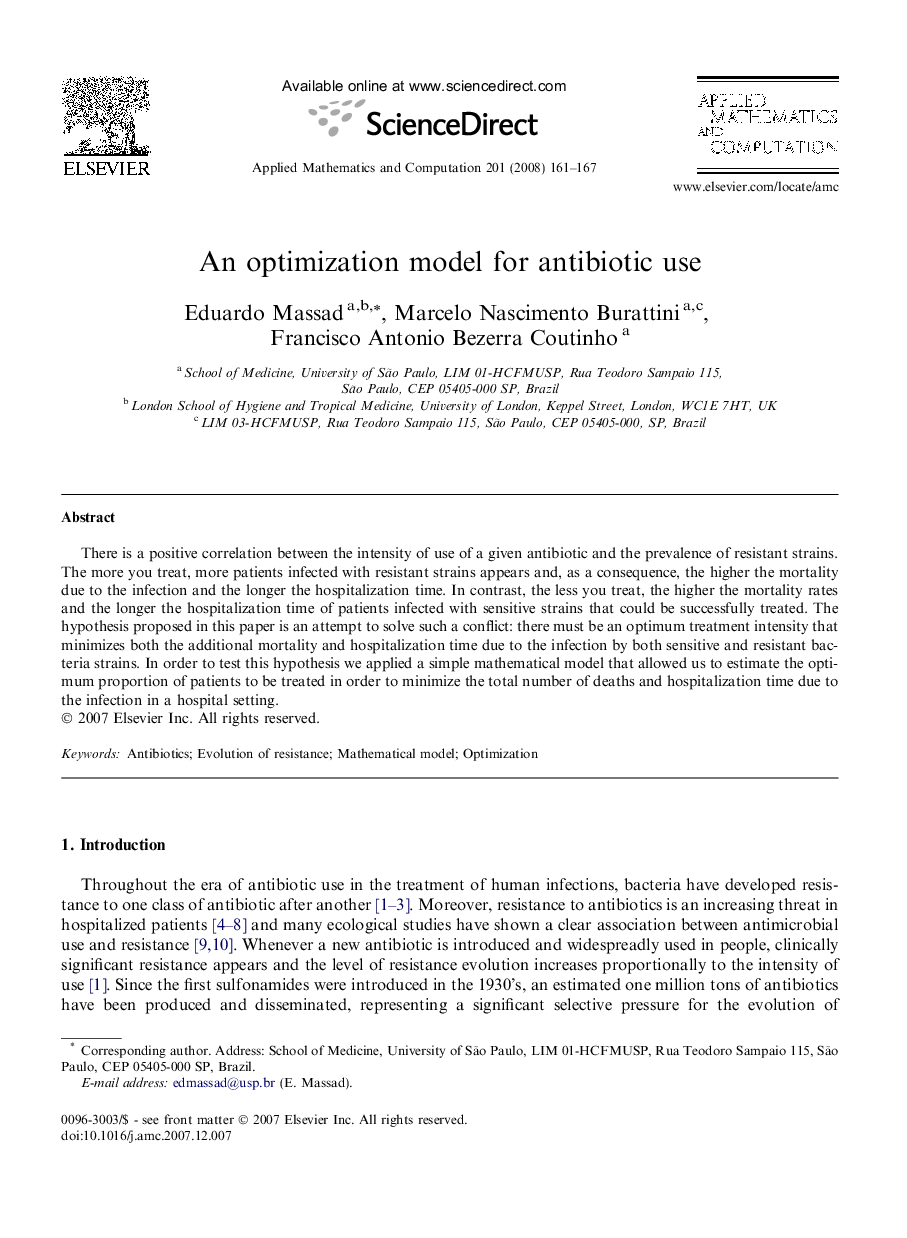| Article ID | Journal | Published Year | Pages | File Type |
|---|---|---|---|---|
| 4634319 | Applied Mathematics and Computation | 2008 | 7 Pages |
There is a positive correlation between the intensity of use of a given antibiotic and the prevalence of resistant strains. The more you treat, more patients infected with resistant strains appears and, as a consequence, the higher the mortality due to the infection and the longer the hospitalization time. In contrast, the less you treat, the higher the mortality rates and the longer the hospitalization time of patients infected with sensitive strains that could be successfully treated. The hypothesis proposed in this paper is an attempt to solve such a conflict: there must be an optimum treatment intensity that minimizes both the additional mortality and hospitalization time due to the infection by both sensitive and resistant bacteria strains. In order to test this hypothesis we applied a simple mathematical model that allowed us to estimate the optimum proportion of patients to be treated in order to minimize the total number of deaths and hospitalization time due to the infection in a hospital setting.
